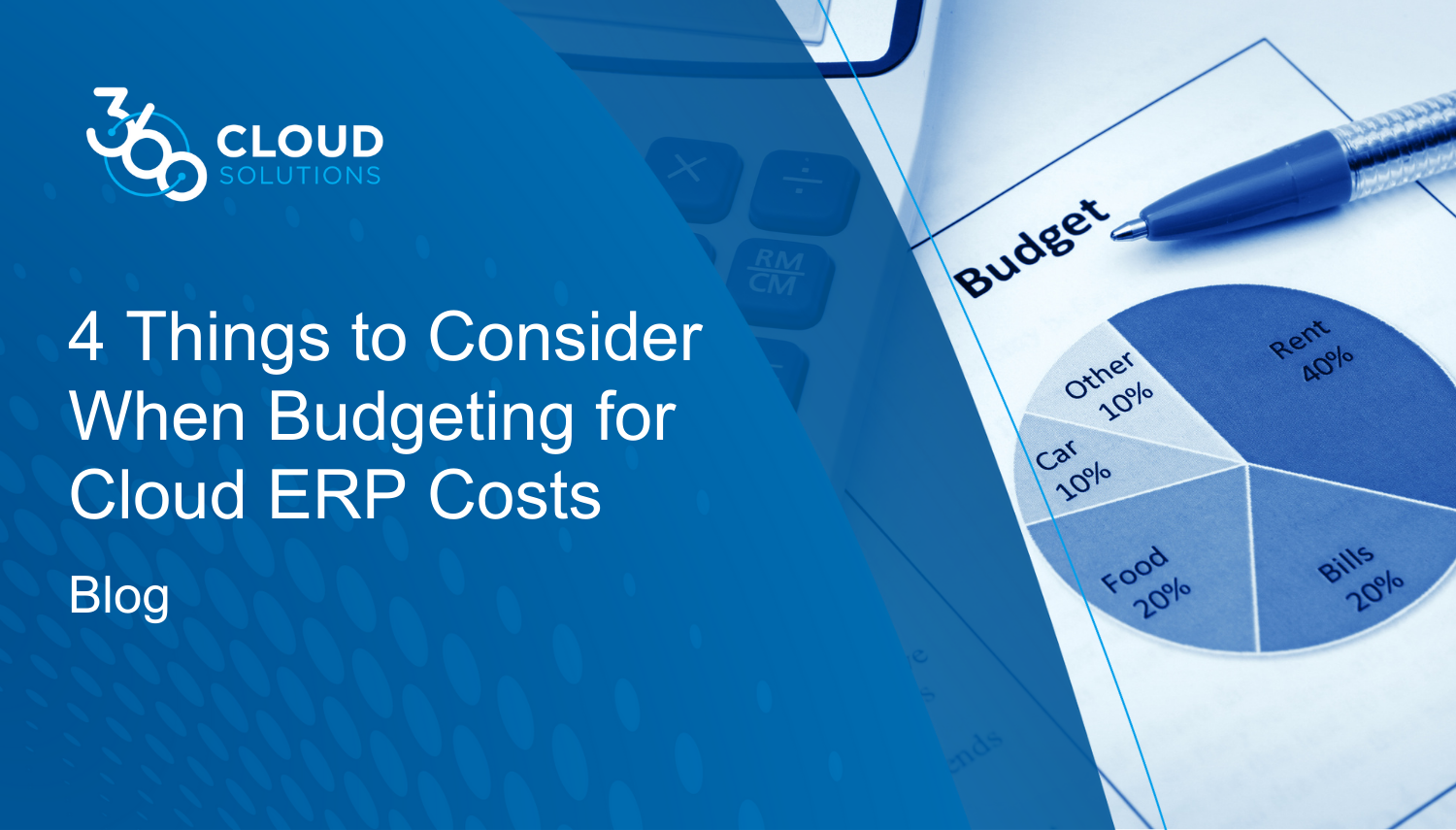
While there are a lot of reasons for an organization to switch from an on-premise ERP system to the cloud—cost is typically a leading driver. According to a study conducted by Hurwitz & Associates, “When comparing the total cost of ownership of on-premise ERP solutions to cloud systems, industry analysts found that cloud-based ERP solutions can cost 50 percent less than on-site for a 100-employee company over a four-year period.” Why?
- Initial costs of cloud-based ERP are typically lower due to the fact that you simply implement the software and then access it through the Internet—no servers or hardware required (other than computers, obviously).
- Cloud-based systems decrease the need for internal IT resources since software providers host and maintain the infrastructure as well as roll out automatic updates.
- Providers typically offer monthly subscription plans that make it easy to budget and manage subscriptions. Bottom line: you only pay for what you use.
When the right solution is chosen and implemented properly, it can absolutely lead to savings, but it’s important to first conduct your due diligence to create a budget based on realistic cloud ERP costs. Since software pricing is seldom available to the public and varies depending on requirements, it’s hard to know where to start. But when considering what a new system will cost it’s important to not forget about hardware, staff resources, third-party vendors, training, and project management as these are critical components to a successful implementation. Below are a few steps you can take to ensure that your team is weighing all the necessary options and developing a realistic cloud ERP budget.
Conduct a Business Process Review
If your organization is considering migrating to a cloud-based ERP solution, it’s important to conduct a thorough business process review to ensure all functional requirements are covered and financial resources are appropriately budgeted. Often times, it’s in the best interest of your implementation to bring on a third-party partner to assist with the review so you can ensure it will be unbiased. No matter if you do it internally or bring on an external partner, there are some best practices you’ll want to adhere to in order to get the most out of the BPR:
- First, spend some time determining what your business wants to get out of updating your ERP system. It is critical to identify and agree upon these goals before kicking-off the ERP implementation.
- List all departments that will be utilizing the system moving forward. Keep in mind this might include more departments than are currently using the accounting system as modern ERP systems have further functionality.
- Create project teams from all functions, i.e. management, accounting, sales, marketing, shipping, receiving, to ensure SMEs are able to properly assess critical needs.
- Review all business workflows from start to finish so you have a clear understanding of system requirements, gaps, and opportunities.
What is found during the business process review will help your team better estimate what functionality and customizations will be needed and how many users you’ll require, leading to a more accurate estimate.
Consider Infrastructure, Integrations, & Customizations
While cloud ERP solutions only require a connected device (i.e. computer, tablet, phone) and an internet connection to function, you may find, as a result of your business process review, that additional software, modules, or customizations are needed to fully achieve your business process optimization goals.
If this is the case, you have to take any additional licenses, integration, and development costs into consideration when considering your cloud ERP budget. Many organizations tend to lack the internal resources to take on these projects which would mean assistance from a third-party implementation firm is necessary.
Tip: Heed the findings of your business process review to reduce the number of customizations and integrations needed by choosing a comprehensive cloud ERP system that meets all of your needs—today and in the future. While add-ons are sometimes inevitable, having a future-focused mindset may save you additional costs down the road.
To Sandbox or Not to Sandbox?
One often-overlooked cloud ERP cost is a sandbox environment. According to Zendesk, a sandbox is a place for developers and admin to “train and practice, without fear of consequences.” Sandboxes are especially important if you have customizations, add-on modules, or integrations so you can see how potential changes would (or wouldn’t) impact the production account.
Depending on the software, a sandbox testing environment is sometimes included in the upfront cost and other times it is an additional line item on your license. While actual price will vary depending on vendor and requirements, it’s often a percentage of your annual license cost.
Training
Implementing new software can be a major disruption to business and without proper training, the benefits of a cloud-based ERP system may never be fully realized. That’s why it’s important to include training in any ERP roll-out plan. Oracle advises businesses to take it one step further and invest in continuous, role-based training—it shouldn’t be a “one and done” event.
The cost of not including training in your cloud ERP budget might be more than the training itself. Two independent research studies found that organizations who spent at least 17% of their total ERP budgets on training are more likely to yield better results and meet project deadlines.
The benefits of a cloud-based ERP system are vast: scalability, availability, speed, and a lower TCO—all of which enable a business to run more efficiently. While typically more cost-effective than it’s on-premise counterpart, it’s important to do your research and consider all facets of the implementation and what’s required to make your migration a success. And remember, no two cloud ERP implementations will cost exactly the same as they are dependent on your specific requirements so it’s best to talk with an expert to get accurate pricing.



